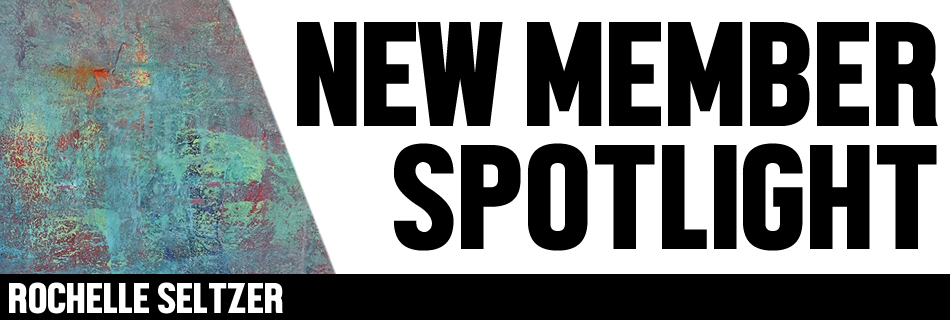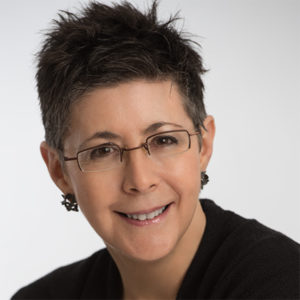
Rochelle Seltzer
When did art become a pursuit? While I was an art major in high school and received a BFA from Moore College of Art and Design, I embarked on a long career as a designer. I created for my clients, but never for myself. In 2011 I experienced a way of opening up to personal expression, and took a deep dive into understanding and exploring creativity with an Israeli phsychiatrist. I learned to teach his method called Intuitive Painting, as well as studying his PsychoCreative Therapy methodology.
Two things followed. During my studies, I began experimenting with paint, collage, sculpture and drawing — creating for myself for the first time since childhood. And, I created a coaching practice, to support other women to embrace — and expand — creativity and the myriad ways it can be employed to live their biggest lives.
Are you self-taught or formally educated in visual art? I received my BFA from Moore College of Art and Design in the 1970’s and was a designer for three decades. In 2015, after studying scultpure at the MFA for 2 semesters, I studied painting in the fall semester at the Corcoran School of the Arts and Design at Gearge Washington University, with Mira Hecht. When I returned to Boston I enrolled at SMFA to study painting with Elaine Spatz-Rabinowitz. I have been her student since January 2016.
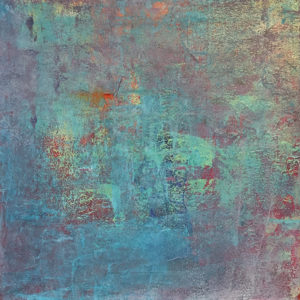
How did you first become involved with CAA? Over two decades ago, I was asked by a friend, who was a CAA member, to design the catalogue for two CCA National Prize shows. Then recently, as I was ready to begin submitting my work for exhibition, CAA was an organization I knew I wanted to join — and I knew I wanted to exhibit my work there.
What role do you think the artist plays in society? Everyone benefits from being engaged with art, both as a viewer and a maker. The inspiration and insights we can all get — people of every age, every background — when engaging with art is remarkable. And, when we make art (draw, paint, sing, write, build, compose, and more) we expand in remarkable ways.
As artists, our work can model and inspire. It can provoke. It can connect to hearts and to minds. It can instigate. It can heal and soothe and delight.
What medium do you currently work in and how did you choose this medium? Having explored collage before embarking on serious study of painting, my recent paintings — which are acrylic on canvas or panel — often include mixed media.
I originally chose to work in acrylic because I felt it was safest for me in terms of ventelation in my studio. I soon discovered that acrylic afforded me many benefits. It dries quickly enough that I can paint in layers without long delays for drying. Thus, employing the techniques I have developed with acrylic, I am able to work with ease.
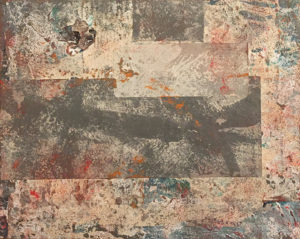
What is your creative process? Where are you finding ideas for your art these days? I begin all of my abstract paintings with a grounding of paint in a color, or colors, that my emotions call for, and with techniques that create surface texture. I then layer (paint and sometimes mixed media), excavate, and build as each painting evolves. I paint slowly and intuitively, tapping emotion and also letting desire and intuition guide me. Many of my paintings change dramiatically as I work on them. I am endlessly surprised at the ways I move through my process.
How do you choose your subject matter? Is there a reoccurring theme that carries throughout your work? My work is abstract. My experimentation and my techniques evolve as my life evolves.
As I paint to make emotion visible, I find I am also painting the space it inhabits. There is mystery and ambiguity in the places where I experience emotion.
I am fascinated by surface and texture, color and form. These subtly emerge (and often change dramatically as each picture evolves) to communicate both the emotion and the sense of space I perceive when I look closely inside myself.
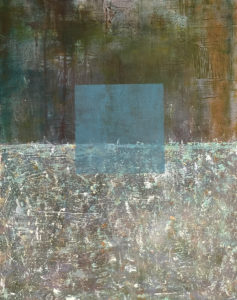
What is one of your artistic goals for 2018? My goal for 2018 has been to paint more, to explore and expand in new ways as a painter, and to begin showing my work. I have also created a website for my art, which is an exciting “work in progress”.
What’s your favorite place to see art? I am delighted to visit museums in Boston, New York and in cities I explore on travels. The Tate Modern in London and Musée d’Orsay in Paris never disappoint, but I love visits to our wonderful local museums (MFA, ICA, Garner, Harvard Art Museums, Decordova, and more), and the wealth of wonderful NY museums that are close enough to visit a few times each year. I also love finding great galleries, wherever I am.
Do you own any art by other artists? I own art by Robert Motherwell, Sonia Delaunay, Joan Mitchell, Bernd Housman, Timothy Hawkesworth, and local artists Maggi Brown, Narayan Khandekar, Bob Oppenheim, Gerri Rachins, Terry Albright and others.
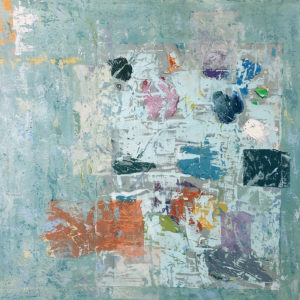
Do you have any shows coming up? Three of my paintings will be included in an exhibition of work done by students in the Continuing Education (CE) programs at the School of the Museum of Fine arts in September.
See more from Rochelle!
Website: RochelleSeltzerArtist.com
Facebook: Rochelle Seltzer and CoachRochelleSeltzer
Instagram: @seltzerrochelle
